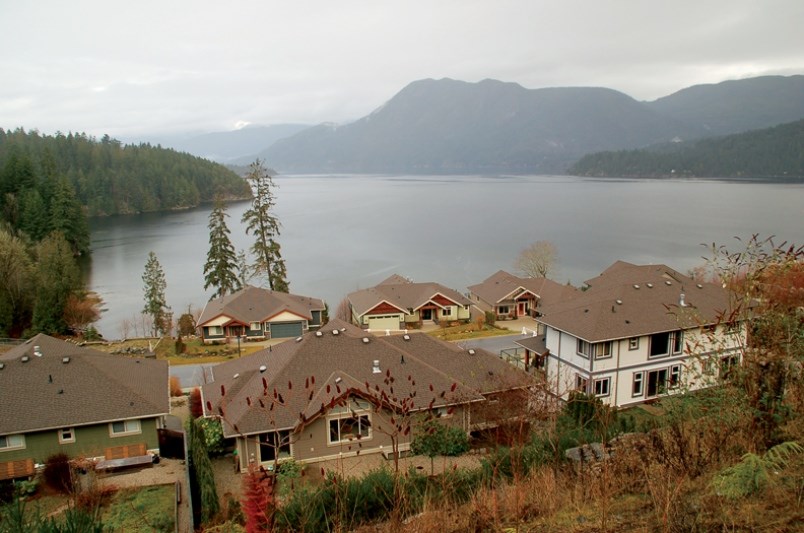It happened to me twice last summer – the first time in Winnipeg, the second time about a month later in Red Deer. “Where are you from?” they asked. I told them. “Isn’t that where the houses are sinking? Where people had to be evacuated?”
It was nationwide. Everywhere in Canada – wherever they got CBC, CTV, Global News, the Globe and Mail, the National Post – people knew about Seawatch.
Seawatch put Sechelt on the map. The Big S was famous.
“Fourteen ‘dream’ homes ordered evacuated as sinkholes open in Sechelt, B.C.,” ran the typical headline.
The coverage left the impression that there had been a sudden catastrophic collapse, but that wasn’t the case. Sinkholes in the “upscale seaside neighbourhood,” as Canadian Press described the West Porpoise Bay subdivision, were nothing new – they had been present on the site before construction began in 2007 and started appearing again in 2012. The worst impact was from the five-metre-deep sinkhole that forced the Storey family from their home in February 2015.
Thurber Engineering warned the District of Sechelt in 2017, after the appearance of another sinkhole, that “injury or even death is a possible consequence” of failing to take measures to control ongoing erosion in the subdivision. But the district did not act on the advice, arguing that the estimated $10-million cost was too much and there was no guarantee the remediation would fix the problem anyway.
Two more sinkholes appeared in late 2018. On Feb. 6, 2019, Thurber recommended the “precautionary closure” of the neighbourhood, saying conditions posed “an unacceptable level of risk to the public.”
The evacuation order followed quickly. Seawatch was now a forbidden zone for district staff. Many volunteers ignored the risks and helped the beleaguered residents move out before the evacuation order went into force on Feb. 15. Most of the families left some of their belongings behind, and the owners of up to five of the homes were unable to remove anything prior to the deadline.
No compensation was offered. The province washed its hands of any responsibility, having “played no role in assessing the risk or in approving or denying necessary building permits.” The District of Sechelt, which did approve the building permits, likewise denied any blame.
The future of the subdivision was unknown. It remains so to this day.
On April 17, the district imposed an information blackout, citing pending litigation by property owners. Mayor Darnelda Siegers said the district would continue its “conversations” with the province and “work toward a plan for the future of the site which could include temporary access for property owners to retrieve possessions.”
On July 12, two property owners filed lawsuits against the district and the province.
On Aug. 13, eight more property owners filed lawsuits against the district and the province, also naming developer Concordia Seawatch, realtors, and engineers.
In early September, RCMP reported that break-ins had occurred at five homes in the empty neighbourhood.
On Sept. 17, Fortis shut off the natural gas lines to the homes for safety reasons.
On Oct. 1, B.C. Green Party leader Andrew Weaver told the government that “repeatedly reissuing this state of emergency every 10 days is an untenable situation that cannot continue.” But as the year ends, it does continue.
The story is far from over. The first court case is set for March 2020.



